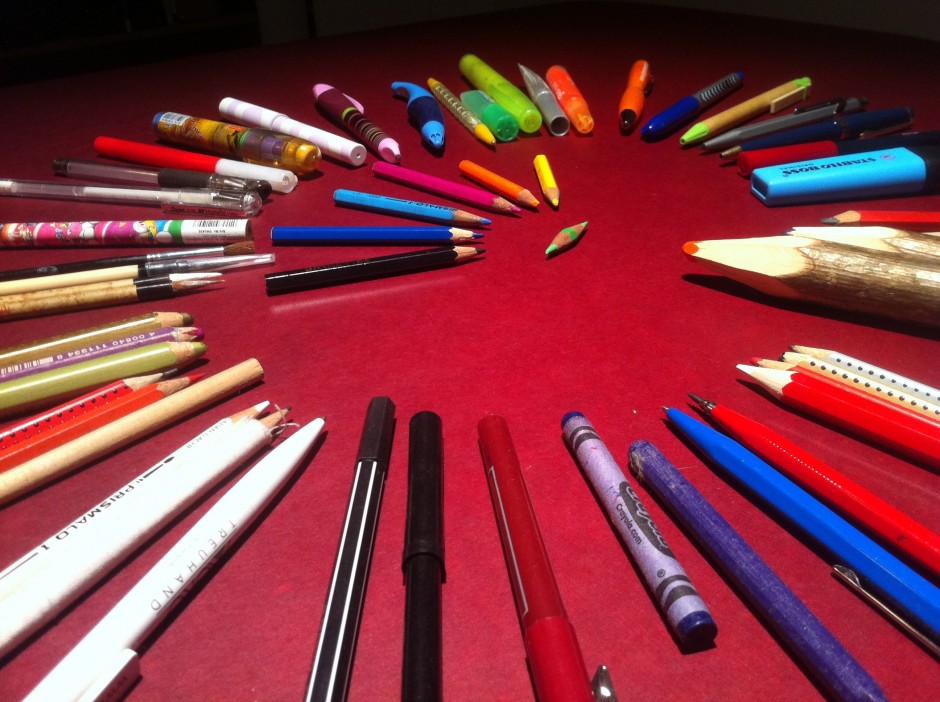Workshop: Gestural tools for expression
class: Gymnasium_ 9.-10. grades or Fachhochschulen: intro. to product design.
topics: usability and ergonomics of handgrips, design process in cycles, hand and digital rapid prototyping, presentation media.
materials: food stuff – veggies, clay, wood_diverse types, metal profiles, recycled materials
learning goals: product use analysis, prototype making, testing, evolving and simplifying a design, correct use of technology, product presentation.
For my workshop on making new gestural writing tools, students develop grips for ink or paint application with handmade quick prototypes in surprising materials including vegetables.
The process begins by playing with and observation of grip-gesture-mark making with existing writing and artistic tools. Then comparing how different tools influence the gesture and output. Course participants will choose an expressive focus and a given pigment transfer technology and then seek grip forms which assist in the gestural expression. Working with vegetables they can with little time invested try out and discover new interactions and discover first hand what ergonomics is. I believe that in the beginning prototypes should have low investment, be non toxic, produce only biodegradable waste and be fun to work with as well as talk about.
Examples of pod like pen forms made from carrots and «Pepper spray» gesture testing and paint application.
Following the generation of handmade vegi-prototypes small group discuss the user experience and focus their development work. Continuing in small groups the students work together to refine the form of the tool as related to the gestures and document their work-play by: sketching, photos, film clips and supporting models. By refining the essential new UX they then can develop a demonstration model and videos of how their new tool could brings a new expressiveness to the artist/graphic artist experience. Discussion of surface finishes, material properties and workability will inform the material selection. For handcrafted models: wood and wood products, Fimo or silicon forms achieve a satisfactory model. Others may choose to develop a CAD Model by 3D scanning or modeling to be outputted to a 3D printer/Lasercutter. The the process, products and 2D, 3D and video demonstration outputs will be presented at the end of the study week or semester course.
In cooperation with Ramon Berger of FabLab-Bern 3D products can be printed or laser cut. Handmade prototypes will be made in the school workshop with in cooperation with the shop teachers.



